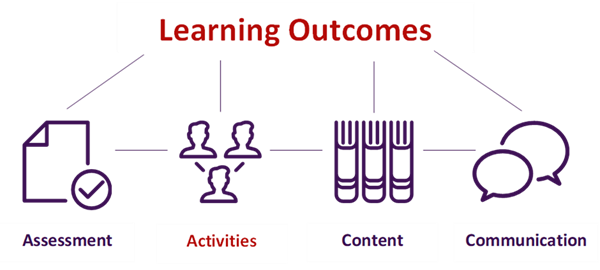Research identifies a link between the use of active learning strategies in teaching and learning and improved student learning outcomes (Freeman et al, 2014). The reason active learning works is because it promotes a deep learning approach and discourages a surface approach. If students are actively working towards building their knowledge and skills, then they are more likely to be engaged with their course or unit. As Biggs and Tang (1999, p. 68) wrote, “it’s what the student does that is important”.
Explore the following resources for inspiration on how to integrate active learning strategies in your teaching.
- 15 Active learning activities (Whenham, 2022).
- Teaching online pedagogy repository - interaction (University of Central Florida, 2017).






